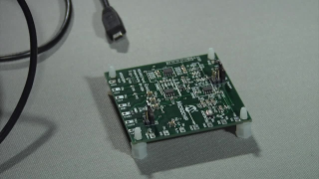Softei & Microchip Curiosity Development Board
Win a Microchip Curiosity Development Board (DM164137) from Softei and if you don’t win, receive a 15% off coupon for this board, plus free shipping.
Microchip’s Curiosity Development Board offers a cost-effective, fully integrated microcontroller development platform targeted at first-time users, makers and those seeking a feature-rich rapid prototyping board. Designed from the ground up to take full advantage of Microchip’s MPLAB® X and MPLAB Xpress Integrated Development Environments, the Curiosity platform includes an integrated programmer/debugger and requires no additional hardware to get started. The Curiosity Development Board is designed to support 8-, 14- and 20-pin 8-bit PIC MCUs with low-voltage programming capability.
Out of the box, this board offers several options for user interface—including physical switches, mTouch® capacitive sensing and on-board potentiometers. A full complement of accessory boards is available via the MikroElectronika mikroBUS™ interface footprint.
The Curiosity Development Board can be operated as an all-in-one development platform, or you can customize it to suit your individual needs.











